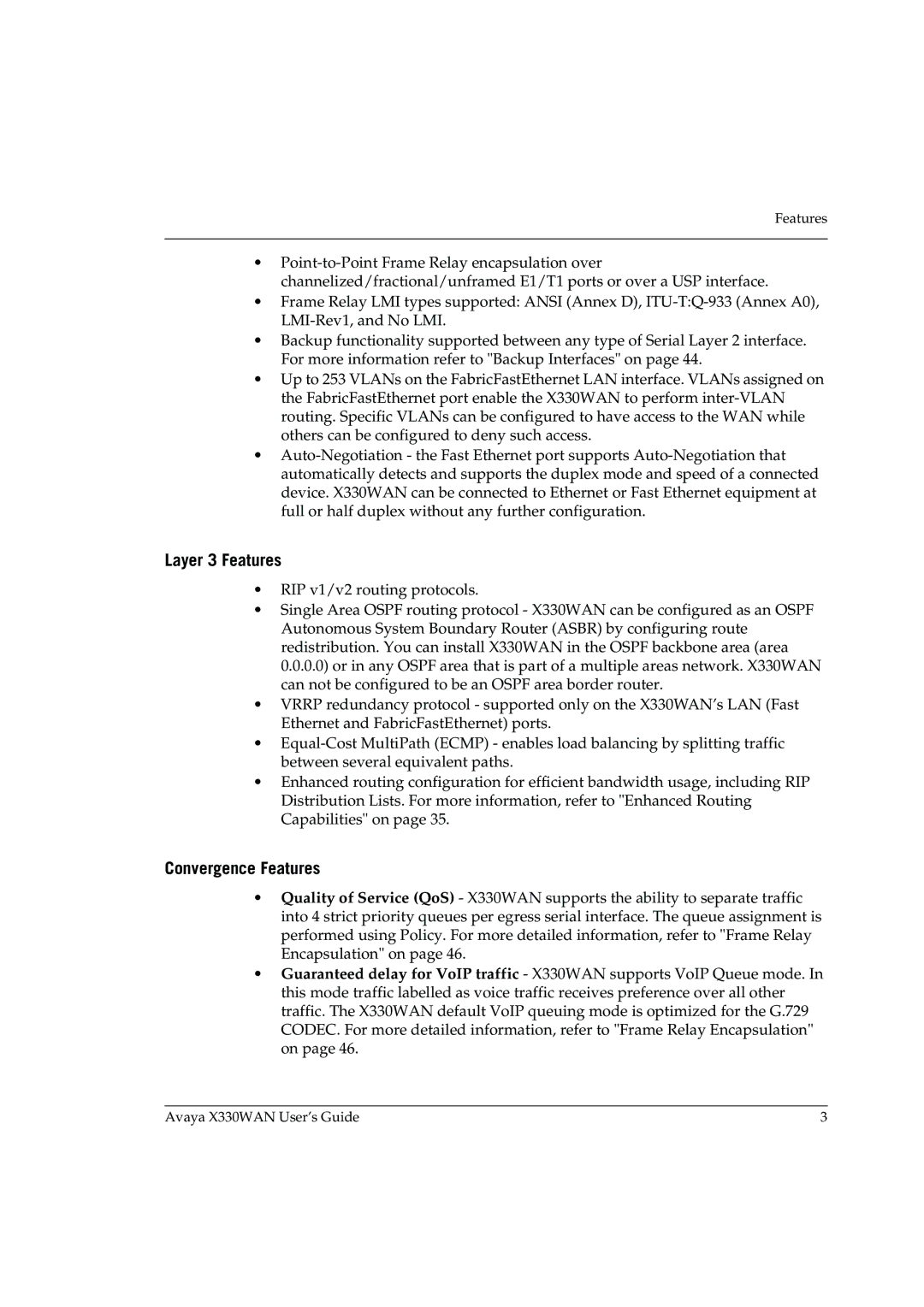
Features
•
•Frame Relay LMI types supported: ANSI (Annex D),
•Backup functionality supported between any type of Serial Layer 2 interface. For more information refer to "Backup Interfaces" on page 44.
•Up to 253 VLANs on the FabricFastEthernet LAN interface. VLANs assigned on the FabricFastEthernet port enable the X330WAN to perform
•
Layer 3 Features
•RIP v1/v2 routing protocols.
•Single Area OSPF routing protocol - X330WAN can be configured as an OSPF Autonomous System Boundary Router (ASBR) by configuring route redistribution. You can install X330WAN in the OSPF backbone area (area 0.0.0.0) or in any OSPF area that is part of a multiple areas network. X330WAN can not be configured to be an OSPF area border router.
•VRRP redundancy protocol - supported only on the X330WAN’s LAN (Fast Ethernet and FabricFastEthernet) ports.
•
•Enhanced routing configuration for efficient bandwidth usage, including RIP Distribution Lists. For more information, refer to "Enhanced Routing Capabilities" on page 35.
Convergence Features
•Quality of Service (QoS) - X330WAN supports the ability to separate traffic into 4 strict priority queues per egress serial interface. The queue assignment is performed using Policy. For more detailed information, refer to "Frame Relay Encapsulation" on page 46.
•Guaranteed delay for VoIP traffic - X330WAN supports VoIP Queue mode. In this mode traffic labelled as voice traffic receives preference over all other traffic. The X330WAN default VoIP queuing mode is optimized for the G.729 CODEC. For more detailed information, refer to "Frame Relay Encapsulation" on page 46.
Avaya X330WAN User’s Guide | 3 |
